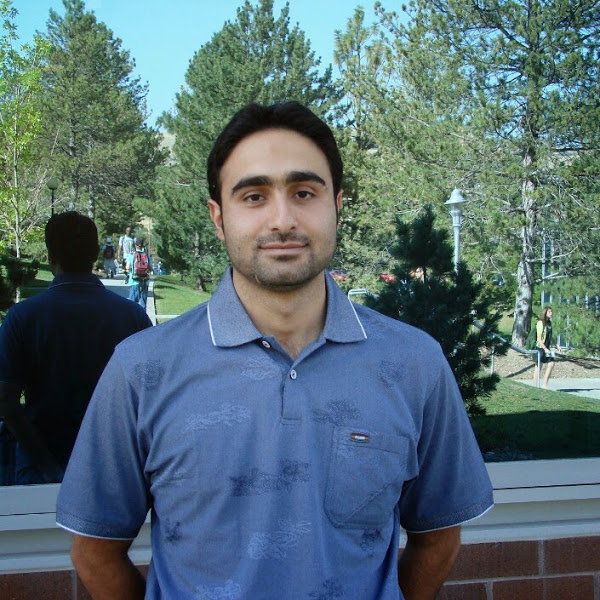
Mojtaba Seyedhosseini
Research Areas
Authored Publications
Sort By
PaLI-X: On Scaling up a Multilingual Vision and Language Model
Xi Chen
Josip Djolonga
Piotr Padlewski
Basil Mustafa
Carlos Riquelme
Sebastian Goodman
Yi Tay
Siamak Shakeri
Daniel Salz
Michael Tschannen
Hexiang (Frank) Hu
Mandar Joshi
Matthias Minderer
Filip Pavetić
Gang Li
Lucas Beyer
Daniel Keysers
Anurag Arnab
Yuanzhong Xu
Keran Rong
Alexander Kolesnikov
Xiaohua Zhai
Neil Houlsby
Computer Vision and Pattern Recognition Conference (CVPR) (2024)
Preview abstract
We explore the boundaries of scaling up a multilingual vision and language model, both in terms of size of the components and the breadth of its training task mixture. Our model achieves new levels of performance on a wide-range of varied and complex tasks, including multiple image-based captioning and question-answering tasks, image-based document understanding and few-shot (in-context) learning, as well as object detection, video question answering, and video captioning. Our model advances the state-of-the-art on most vision-and-language benchmarks considered (20+ of them). Finally, we observe emerging capabilities, such as complex counting and multilingual object detection, tasks that are not explicitly in the training mix.
View details
PaLI: A Jointly-Scaled Multilingual Language-Image Model
Xi Chen
Piotr Padlewski
Daniel Salz
Sebastian Alexander Goodman
Basil Mustafa
Lucas Beyer
Alexander Kolesnikov
Keran Rong
Hassan Akbari
Gaurav Mishra
Linting Xue
James Bradbury
Chao Jia
Carlos Riquelme
Xiaohua Zhai
Neil Houlsby
International Conference on Learning Representations (ICLR) (2023)
Preview abstract
Effective scaling and a flexible task interface enable large-capacity language models to excel at many tasks. PaLI (Pathways Language and Image model) extends these ideas to the joint modeling of language and vision. PaLI is a model that generates text based on visual and textual inputs. Using this API, PaLI is able to perform many vision, language, and multimodal tasks, across many languages. We train PaLI with two main principles: reuse of pretrained unimodal components, and joint scaling of modalities. Using large-capacity pretrained language models and vision models allows us to capitalize on their existing capabilities, while leveraging the substantial cost of training them. We scale PaLI models across three axes:the language component, the vision component, and the training data that fuses them. For the vision component, we train the largest and best-performing VisionTransformer (ViT) to date. For the data, we build an image-text training set over10B images and covering over 100 languages.
PaLI inherits and enhances language-understanding capabilities, and achieves state-of-the-art in multiple vision and language tasks (image classification, image captioning, visual question-answering, scene-text understanding, etc.), based on a simple, modular, and reuse-friendly platform for modeling and scaling.
View details
Towards Universal Image Embeddings: A Large-Scale Dataset and Challenge for Generic Image Representations
Nikolaos-Antonios Ypsilantis
Kaifeng Chen
Bingyi Cao
Mário Lipovský
Pelin Dogan Schönberger
Grzegorz Makosa
Boris Bluntschli
Ondrej Chum
Proc. ICCV'23 (2023)
Preview abstract
Fine-grained and instance-level recognition methods are commonly trained and evaluated on specific domains, in a model per domain scenario. Such an approach, however, is impractical in real large-scale applications. In this work, we address the problem of universal image embedding, where a single universal model is trained and used in multiple domains. First, we leverage existing domain-specific datasets to carefully construct a new large-scale public benchmark for the evaluation of universal image embeddings, with 241k query images, 1.4M index images and 2.8M training images across 8 different domains and 349k classes. We define suitable metrics, training and evaluation protocols to foster future research in this area. Second, we provide a comprehensive experimental evaluation on the new dataset, demonstrating that existing approaches and simplistic extensions lead to worse performance than an assembly of models trained for each domain separately. Finally, we conducted a public research competition on this topic, leveraging industrial datasets, which attracted the participation of more than 1k teams worldwide. This exercise generated many interesting research ideas and findings which we present in detail. Project webpage: https://cmp.felk.cvut.cz/univ_emb/
View details
CoCa: Contrastive Captioners are Image-Text Foundation Models
Jiahui Yu
Zirui Wang
Vijay Vasudevan
Legg Yeung
Yonghui Wu
Transactions on Machine Learning Research, Aug 2022 (2022)
Preview abstract
Exploring large-scale pretrained foundation models is of significant interest in computer vision because these models can be quickly transferred to many downstream tasks. This paper presents Contrastive Captioner (CoCa), a minimalist design to pretrain an image-text encoder-decoder foundation model jointly with contrastive loss and captioning loss, thereby subsuming model capabilities from contrastive approaches like CLIP and generative methods like SimVLM. In contrast to standard encoder-decoder transformers where all decoder layers attend to encoder outputs, CoCa omits cross-attention in the first half of decoder layers to encode unimodal text representations, and cascades the remaining decoder layers which cross-attend to the image encoder for multimodal image-text representations. We apply a contrastive loss between unimodal image and text embeddings, in addition to a captioning loss on the multimodal decoder outputs which predicts text tokens autoregressively. By sharing the same computational graph, the two training objectives are computed efficiently with minimal overhead. CoCa is pretrained end-to-end and from scratch on both web-scale alt-text data and annotated images by treating all labels simply as text, seamlessly unifying natural language supervision for representation learning. Empirically, CoCa achieves state-of-the-art performance with zero-shot transfer or minimal task-specific adaptation on a broad range of downstream tasks, spanning visual recognition (ImageNet, Kinetics-400/600/700, Moments-in-Time), crossmodal retrieval (MSCOCO, Flickr30K, MSR-VTT), multimodal understanding (VQA, SNLI-VE, NLVR2), and image captioning (MSCOCO, NoCaps). Notably on ImageNet classification, CoCa obtains 86.3% zero-shot top-1 accuracy, 90.6% with a frozen encoder and learned classification head, and new state-of-the-art 91.0% top-1 accuracy on ImageNet with a finetuned encoder.
View details
